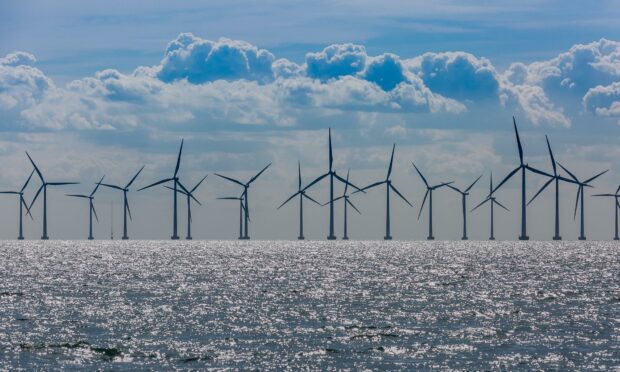Scott McCallum, a Partner and offshore wind specialist in Shepherd and Wedderburn’s Clean Energy Group, explains how the wind power process can be sped up to meet demand.
-
Some Press and Journal online content is funded by outside parties. The revenue from this helps to sustain our independent news gathering. You will always know if you are reading paid-for material as it will be clearly labelled as “Partnership” on the site and on social media channels.
This can take two different forms.
“Presented by”
This means the content has been paid for and produced by the named advertiser.
“In partnership with”
This means the content has been paid for and approved by the named advertiser but written and edited by our own commercial content team.
The British energy security strategy published by the UK Government on 7 April 2022 reasserted the key role that offshore wind must play if we are to achieve the overarching objective of providing “clean, affordable, secure power to the people for generations to come”.
“We will be the Saudi Arabia of wind power, with the ambition that by 2030 over half our renewables generation capacity will be wind, with the added benefit of high skilled jobs abounding these shores,” the prime minister enthused.
The plan sets lofty goals, however they will need to be backed up by some detailed process changes to achieve the scale of offshore wind delivery required.
The UK Government recognises in its strategy that to achieve the desired rebalancing of the UK’s energy mix, the rate of offshore wind development and deployment must speed up dramatically. If future projects progress at the glacial pace of the current crop then prices will continue to go up and the lights may well go out.
So where are the opportunities to speed things up? Consenting and grid seem like a sensible place to start.
The plan proposes to reduce the time required to obtain an offshore wind project consent – a Development Consent Order (DCO) – to one year from the point of application (it takes approximately 17 months currently when things work properly). This would provide a major boost to the pipeline of projects flowing from The Crown Estate’s Round 3 Extension and Round 4 offshore seabed licensing rounds as they gear up to request project consent.
However, there is no specific detail on how the UK Government plans to shave seven months off a process that is already consistently failing to deliver on time. The need for a much stronger policy steer for examining panels, decision-makers and statutory consultees, and for the provision of strategic solutions to environmental barriers, are highlighted in the plan.
If government can strengthen policy support and, importantly, remove the lengthy habitat/bird compensation discussions from project Examinations, it should be possible to reduce the DCO examination period, the period given to panels to report and the period given to the Secretary of State for a decision.
This will take significant work and resource and will require careful consultation. North of the border, the Scottish Government should be watching carefully and implementing its own tweaks to increase certainty and reduce application time periods.
There may not be time (or the desire) to introduce a DCO-equivalent process in Scotland, however the need for a stronger policy steer and creative, strategic solutions to environmental barriers are equally applicable.
Generating electricity from new offshore wind developments is of little use without the infrastructure to get it to customers. The need for significant grid upgrades is clear, as is the political clamour to ensure a coordinated approach to offshore wind connections. Delivery of the required grid improvements in the time available will be challenging and we are struggling to get started.
The UK Government’s plan notes that the Holistic Network Design, which is currently being developed, “will identify strategic infrastructure needed to deliver offshore wind by 2030”. The necessary tools, resource improvements and collective effort will also have to be deployed to achieve the timeous delivery of grid upgrades.
Time is short if we are serious about harnessing offshore wind to meet our net zero and energy security ambitions.











